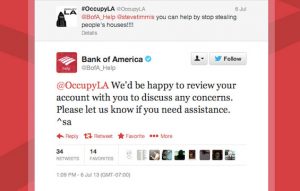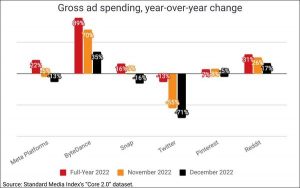Recent news stories about popular or scandal-ridden founders have had serious impact on public perceptions of the brands they represent. Just look at Uber: While original founder Travis Kalanick seriously damaged the company’s goodwill, current CEO Dara Khosrowshahi has been responsibly popular, taking major steps to turn that goodwill around.
People want to buy from brands they perceive as “good.” The latest news or the reputation of a founder or company can have measurable effects on the bottom line. Organizations need to use their social platforms to show the interesting side of the brand: Posts can’t be nonstop calls to action. And nowhere is this humanization easier to showcase than on Instagram.
While the social platform is known for pictures of stunning models, amazing landscapes, and adorable pets, there’s an entire world of promotion happening there, too. And it’s a place where you as a founder should be spending your time. In fact, users are 10 times more likely to engage with a brand on Instagram versus other platforms — looking at you, Facebook and Twitter.
What are these entrepreneurs doing on Instagram to make such a huge splash? Let’s take a look at some of the most impressive examples to find out:
1. Capturing moments.
A lot of companies’ early days on Instagram basically amount to “Just look at the camera and smile.” But on this platform, nothing is more unremarkable than cheesing.
I understand why brands do it, especially when they have service-based offerings. But candid, realistic moments will trump staged pictures every time. My team at Vector might sell a product, for example, but that isn’t the main focus of our Instagram because we prefer to focus on our people and their stories of growth and development.
The moment can be simple and subtle. Machines for Freedom captures this perfectly. The company sells women’s biking clothing, trying to break down the ridiculous idea that such products should just be men’s brands made smaller. All of its photos feature average people on bike rides, capturing the moment when somebody stops to take a drink or tell a joke or struggle with a 20 percent grade (death to the legs). I feel like I’m on every single ride with these ladies, and it’s wonderful.
Another brand that does this exceptionally well is Indian Motorcycle. These guys have incredible products, but they spend their time capturing the joy of riding. You never see these bikers looking at the camera and smiling. There’s always this sense of contentment and satisfaction. It’s everything Harley Davidson wishes people were saying about Harley right now. The company accomplishes this through a focus on capturing authentic, realistic, subtle moments.
2. Making the product the hero.
This is totally a no-brainer, but it’s not about just creating product glamour shots. It’s about telling the product’s story and the story of the people who make it. Behind-the-scenes posts add a human interest element that draws consumers in.
There’s a small local company in my area called Nick’s Handmade Boots. The team does this storytelling exceptionally well, demonstrating the manufacturing process and showing you in-progress pieces. You look at these products and you can’t help but want them. The company also includes a link tree in its bio, which allows it to publish up to five URL links, making it easy to onboard a new customer. The whole process is a romanticizing of the product: You’re not buying boots; you’re buying status and self-image.
Showcasing a product through its creation process is simple, but not easy. If you don’t have that talent on hand, it’s worse to publish bad content than to have no Instagram at all. So it might be wise to hold back your social media desire until you can collect some talent.
3. Adding a philosophical element.
Your company almost definitely has a mission statement — and if not, it should — so why not share that philosophy with the world? It’s an opportunity to find and tap into the passion among your audience. Brands that take a stand for the things they believe in have higher chances of connecting with consumers over that shared passion.
REI’s #OptOutside movement is a perfect example of an organization putting its beliefs at the forefront of its social media presence. It started when REI opted to close its doors on Black Friday, encouraging its employees to spend the day outside instead — and post pictures using the hashtag along the way. The message resonated with REI’s consumers in a big way, and the movement grew to include hundreds of thousands of people.
Joni and Friends, a small charity serving people affected by disabilities, is also known for openly sharing its philosophies. The team believes that a disability isn’t something to be ashamed of. One of my favorite of its posts says, “Nothing compares to the joy of seeing a child receive their own wheelchair for the first time!”
I didn’t even know a child getting a wheelchair was an exciting event. But by helping to normalize and emotionally connect people through respect and empathy, Joni and Friends extends that philosophy outward to everyone who comes across one of its posts.
As negativity and infighting grow on the other social networks, users go to Instagram to find real connections and uplifting content. By joining that conversation with honest, thoughtful, high-quality posts, you’ll increase positive perceptions of your brand, create stronger bonds with your audience, and cultivate lifetime loyalty.
Digital & Social Articles on Business 2 Community(61)






